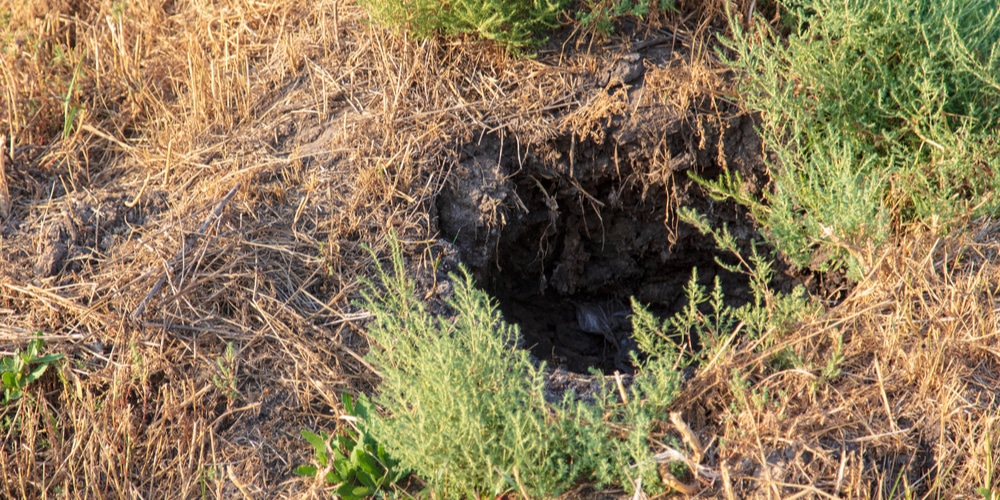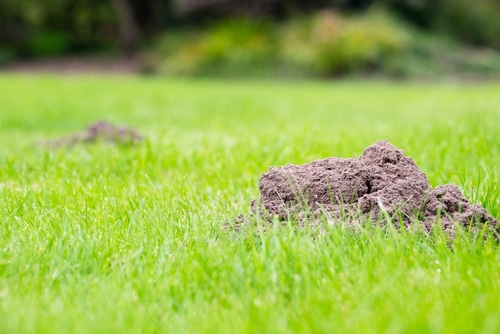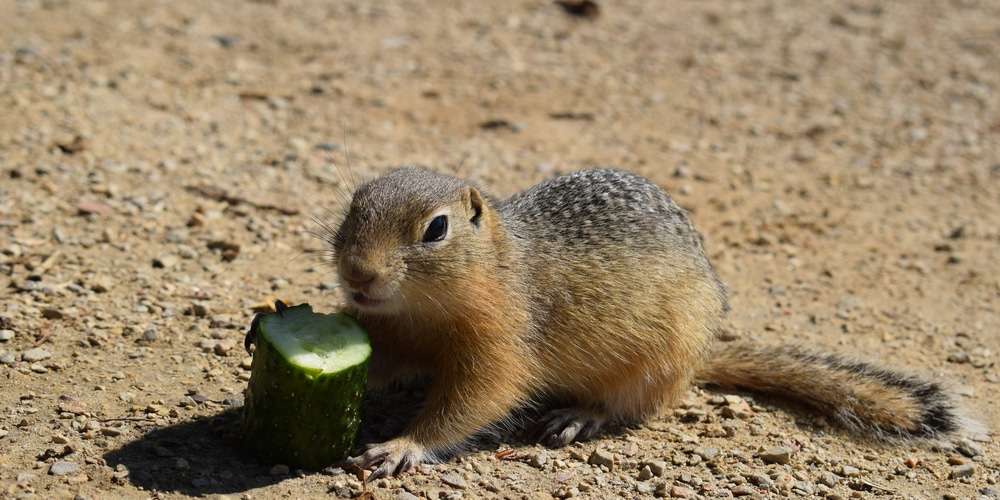The grass is a beautiful part of any landscape, but it can be quite a sight when it starts to develop holes! So what causes these holes in grass?
Many things can lead to this problem, but we will discuss the most common ones. Keep reading to learn more about hole-y grass and how to fix it!
The Most Common Causes Of Holes In Lawns

Every yard has its share of holes, but sometimes these craters can become a real problem. If you’re wondering what’s causing all the holes in your lawn, here are some of the most common culprits:
Grubs
One of the most frequent culprits of brown patches in lawns is grub damage. Grubs are the larval stage of several types of beetles, and they feed on grass roots. This can cause the grass to die and leave behind bare patches of soil.
The best way to control grubs is to apply a pesticide in early summer before hatching. If you already have a grub problem, you can try to control them by watering deeply and regularly, as this will help the grass roots grow deep and strong.
You can also try to improve the drainage in your lawn, as this will create a less favorable environment for grubs. Finally, remove any dead leaves or organic matter from your lawn, as this provides a food source for grubs. By taking these steps, you can help to keep your lawn healthy and free of grub damage.
Moles
Moles are small, burrowing animals that tunnel through the ground searching for food. While they don’t typically eat grass, their digging can still damage your lawn. In addition, moles can create trip hazards and make it difficult to mow your lawn.
If you suspect that moles are responsible for the holes in your lawn, consider using traps or poisons to get rid of them. There are a variety of traps available, including live traps and spring-loaded traps.
You can also purchase poisons that are designed specifically for moles. However, before taking any action, be sure to check with your local wildlife agency to see if there are any restrictions on trapping or poisoning moles in your area.
Rabbits
When damaging your lawn, moles and rabbits are two of the biggest culprits. While both animals live underground and search for food by burrowing deep into the soil, they have different preferred diets.
While moles tend to be more omnivorous, eating anything from insects to roots and small rodents, rabbits predominantly feed on grass. In turn, this has a significant impact on your lawn.
A single rabbit can easily decimate a large grass area in just one night, leaving behind unsightly bare patches.
Given these issues, you must take steps to deal with rabbit infestations in your yard as soon as possible. One of the best solutions is to install a strong fence around the perimeter of your property.
This will help keep rabbits out and prevent them from digging up your turf. Additionally, you can use repellents or traps to physically deter the rabbits from entering your yard or catch them if they do get in.
Gophers
Gophers are small, burrowing rodents that can cause a lot of damage to your lawn. They create intricate tunnel systems underground and are known for eating plants and roots. If you have gophers on your lawn, you’ll likely see small mounds of dirt around their entrances.
These animals can be difficult to get rid of, but there are a few things you can do to try to control them.
Trapping is one option, but it’s important to set the trap in the right place. Otherwise, you may end up trapping other animals like skunks or rabbits. You can also try using sonic devices or poison baits, but they should be used with caution as they can harm other animals and humans.
If you have a gopher problem, it’s best to consult with a professional to find the best solution.
Holes in Grass: Conclusion
There are a variety of animals that can cause holes in your lawn, but by taking the proper steps, you can help to control them.
By improving the drainage in your yard, removing organic matter, and using traps or poisons, you can keep your lawn healthy and free of damage. With a little effort, you can have a beautiful yard that you can enjoy for years to come.

